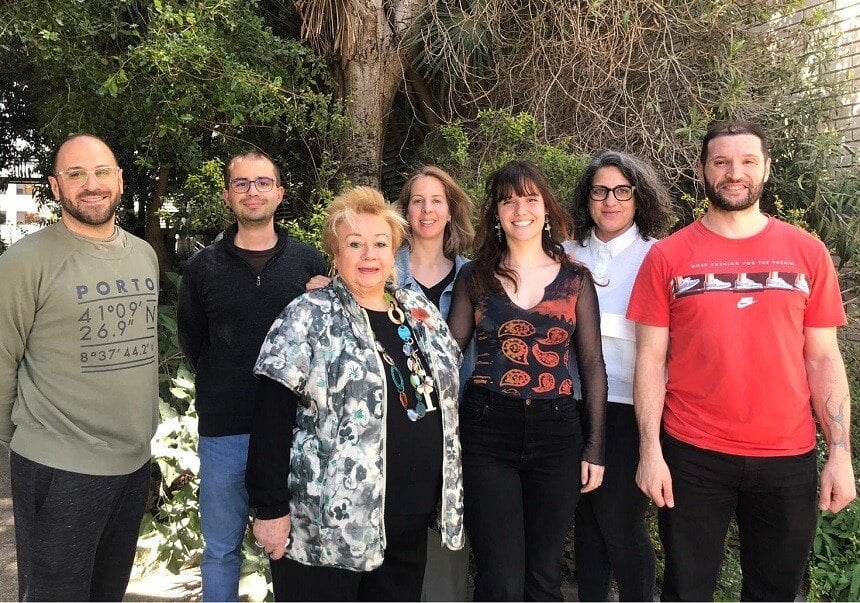A team from the Cavanilles Institute of Biodiversity and Evolutionary Biology (ICBiBE), together with the Institute of Biotechnology and Biomedicine (BIOTECMED) and the Department of Botany and Geology of the Faculty of Biological Sciences at the University of Valencia (UV) described a new microalga, which has been named Trebouxia barrenoae. It is named in honor of Eva Barreno, UV emeritus professor and renowned lichenologist, whose studies have significantly contributed to the understanding of mutualist interactions in lichens
Research staff of the Cavanilles Institute of Biodiversity and Evolutionary Biology (ICBiBE), located in the scientific-academic area of the Science Park of the University of the Valencia, has described a new microalga, which has been named as Trebouxia barrenoae. It is named in honor of Eva Barreno, UV emeritus professor and renowned lichenologist, whose studies have significantly contributed to the understanding of mutualist interactions in lichens. The Institute of Biotechnology and Biomedicine (BIOTECMED) and the Department of Botany and Geology of the Faculty of Biological Sciences of the University of Valencia (UV) have also participated in this discovery.
Lichens are organisms formed by the mutualistic symbiosis between a fungal partner and several photosynthetics, which can be microalgae or cyanobacteria. This successful partnership has led 27% of the known fungi (more than 20,000 species) to form lichens. Although lichenized fungi have been extensively studied, photobionts have not received as much attention, with nearly 200 species of microalgae described so far. The new alga, described in an article in the magazine Fottea, is part of the genus Trebouxia, the most widespread, which accounts for about 80% of the symbiotic microalgae of lichens.
"With an integrative approach combining advanced microscopy, phylogenetic analysis and physiological and ecological studies, we have concluded that this microalga is frequently associated with asexual-reproducing lichens (the fungus and the algae are dispersed together) and inhabits temperate forests, and Mediterranean regions of Eurasia, with a clear affinity for humid and cold zones", explains Tamara Pazos, ICBiBE researcher and first signatory of the article.
"With an integrative approach combining advanced microscopy, phylogenetic analysis and physiological and ecological studies, we have concluded that this microalga is frequently associated with asexual-reproducing lichens (the fungus and the algae are dispersed together) and inhabits temperate forests, and Mediterranean regions of Eurasia, with a clear affinity for humid and cold zones", Tamara Pazos, ICBiBE researcher and first signatory of the article
According to physiological studies, the microalga Trebouxia barrenoae prefers high light intensities. Its description has major implications for future biodiversity studies in forest ecosystems, and provides a more complete understanding of lichenic symbioses. The description of this microalga elevates the formally recognized diversity of the genus Trebouxia to 32 species. In addition to Tamara Pazos, Patricia Moya, Isaac Garrido-Benavent, César D. Bordenave, Ayelén Gazquez and Salvador Chiva participated in the study.
The new species represents an advance in the knowledge of symbiotic microalgae in Valencian forest ecosystems, where sampling was carried out. This multidisciplinary approach has not only made it possible to characterize the new species described in detail, but also reinforces the importance of studying and formally describing photobionts to better understand the biodiversity and ecology of lichens.

Ultrastructure of Trebouxia barrenoae sp. nov. in culture by optical microscopy. Scale bar: 5 μm . Photo: UV
This project has the financial support of the Generalitat Valenciana (PROMETEO/2021/005), and the Ministry of Science and Innovation of the Government of Spain (PID2021–127087NB–I00).
Source: UV News
Pazos et al.: «Trebouxia barrenoae sp. nov. (Trebouxiophyceae, Chlorophyta), a new lichenized microalga widespread in temperate ecosystems». Fottea, Olomouc, 25(1): 68–80, 2025. DOI: 10.5507/fot.2024.010
--
Recent Posts


